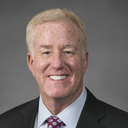Executive Summary: Exploring the Financial and Governance Ingredients for Nonprofit Stability
By Michael McNee | April 2, 2015 |Exploring the Financial and Governance Ingredients for Nonprofit Stability - and Keeping Fraud and Insolvency Far Away
Executives from the nonprofit world convened at Marks Paneth in Manhattan recently for a breakfast discussion co-sponsored by Charity Navigator, called “Don’t Be the Next Domino to Fall in the Not-for-Profit World!”
Using the financial collapse of the Federation Employment and Guidance Services (FEGS), one of New York’s largest nonprofits with a $225 million annual budget, as a backdrop, the seminar explored issues related to fraud, governance, reporting transparency and operational sustainability – and underscored practices and safeguards that can protect nonprofits.
Michael McNee, Partner-in-Charge of the Nonprofit and Government Services Group at Marks Paneth was joined by Ken Berger, the now former President and CEO of Charity Navigator, a nonprofit charity watchdog group that serves donors. Drawing from their extensive experience, the two presenters shared their perspectives on steps nonprofits can take to keep the specter of fraud and insolvency at bay.
Among the insights and suggestions that Michael McNee highlighted in his remarks:
- Nonprofit boards, particularly finance and audit committees, should ask their financial officers to provide a regular reporting of current assets and liabilities – and analyze this information over time to identify trends that may be of concern. Management should be prepared to furnish this information, regularly and accurately.
- Balance sheet items deserve special scrutiny. For instance, executives and boards should probe as to the aging of accounts receivable and assess whether the allowance for un-collectibles is conservative enough. Another area on the balance sheet of some social service agencies that can obscure important financial matters is in the “due to funding sources” or “deferred revenue” categories.
- A nonprofit’s income statement should be “dissected” into major programs. And each program should be presented in a discrete Profit & Loss format. This information – an overview of each programs’ P&L – should be presented internally and be summarized in a “whitepaper” as part of the annual organization audit.
- Executives and boards should require that information from balance sheets and income statements be shown in consolidating fashion as supplemental data in the internal and external financials. This makes any internal transfers of assets and receivables and payables between programs in the organization more visible. That insight, in turn, enables senior leaders and board members to ask questions about the sustainability of certain operations and begin to address them.
- Overall, a nonprofit board’s audit and/or finance committee should maintain a healthy skepticism about the organization’s finances. They must understand the many dimensions of the organization and its business, including pressures on management, their financial reporting capabilities, and budgetary and legal variables. Finally, the audit committee must supervise and be involved in code-of-conduct activities and oversight of potential conflicts of interest and the organization’s whistleblower program.
Meanwhile, Ken Berger outlined the actions high-performing nonprofit organizations can take to help assure themselves and their stakeholders that they’re on course to achieve their mission while staying financially secure.
Ken Berger drove home the following points based upon his experience:
- Social businesses – for-profit enterprises run by nonprofits to support mission-related programs – deserve more scrutiny than they are perhaps getting. Are they draining, rather than replenishing, resources? Are they taking from Peter (the nonprofit) to pay Paul (the social business)? Are their leaders on the up and up?
- While virtually all leading nonprofits are run and staffed by committed, high-integrity individuals, no organization is exempt from employees and even top executives who overstep, or worse. Therefore, it serves boards, leaders and other stakeholders well to be even more vigilant than they think they should be. There are a few types of “bad apples” who may be in decision-making roles that boards should look out for. There is the “liar,” who tells everyone what they want to hear about operations and finances. The “scoundrel” believes in using everyone and taking whatever he or she can get. The “thief” who takes the view, “We’re smart, so let’s make some money here.” And there is the “hanger on,” who views his or her role at the nonprofit as “money for nothing.”
- One should think of an old-fashioned tricycle when evaluating a nonprofit’s performance and accountability. There are four areas to assess: governance, which comprises the tricycle’s left rear wheel; financial health, the right rear wheel; results, represented by the big front wheel, and leadership accountability, the seat.
For a copy of the non-proprietary portion of Michael McNee’s presentation, please click here. Ken Berger’s presentation can be found here.
About Michael McNee
Michael McNee, CPA, is the Partner-in-Charge of Attest Services at Marks Paneth LLP. He is also a member of the firm’s Executive and Management Committees. In these roles, Mr. McNee is responsible for overseeing the execution of the firm’s audit and attest services and directing the operations of the Nonprofit, Government & Healthcare Group. He develops strategy, sets policy and acquires and develops talent. In addition to his managerial duties, Mr. McNee maintains client responsibilities and... READ MORE +




